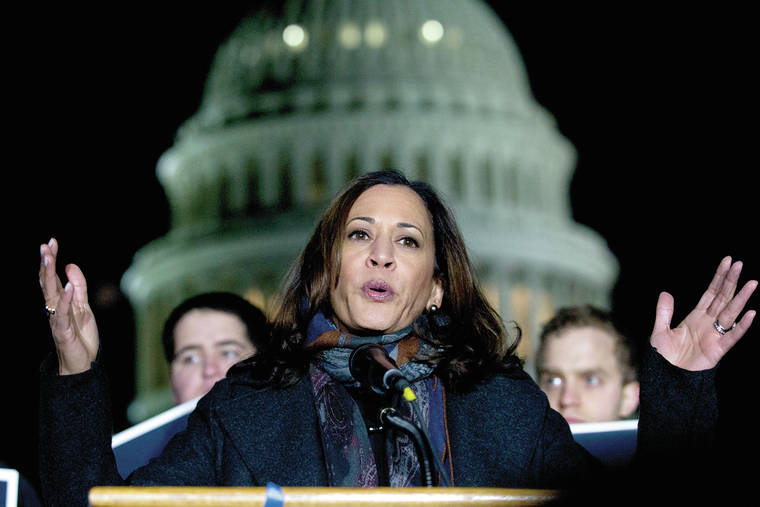SACRAMENTO, Calif. — Hours before Kamala Harris took the stage for the first time as Joe Biden’s vice presidential pick, she received a text message from a childhood classmate with photos from their school days.
A pensive Harris sits on the floor, dutifully looking ahead, a child in the center of an experiment in racial integration. She was among students who took the bus from their neighborhoods to school in the more affluent hillsides of Berkeley, California.
“That’s how it started. There’s no question!” Harris, 55, texted back to Aaron Peskin, the former classmate and now a San Francisco supervisor.
Fifty years later, she’s the first Black woman and first Asian American woman named to a major party presidential ticket, joining Biden in his fight to defeat Republican President Donald Trump.
Harris’s path toward the second-highest office in the United States has tracked the nation’s ongoing struggle for racial equality. The start-and-stop progress and sometimes messy debate has shaped her life: an upbringing by immigrant parents, a childhood among civil rights activists, a career at the helm of a flawed criminal justice system and her rapid ascent in Democratic politics.
Those experiences forged a politician who is unafraid to buck the political powers that be, but also charts a cautious course through policy debates. She’s emerged as a leader who knows the power of tough questioning and a viral moment, and also the weight of her role as a voice for women of color.
“My mother Shyamala raised my sister Maya and me to believe that it was up to us and every generation of Americans to keep on marching,” Harris said Wednesday. “She’d tell us: Don’t sit around and complain about things. Do something.”
Her fast rise hasn’t been without criticism, including on her shifting policy positions. She endured questions familiar to women in politics, particularly women of color, about her ambition. Trump labeled her “nasty” for her piercing interrogation of his nominees. Some progressive Democrats, meanwhile, view her work as a prosecutor skeptically.
Her own presidential bid, announced before 20,000 people in her hometown of Oakland, ended before voting began as she struggled to raise money or find a clear message. She was a Howard University graduate with no high-powered ties when she returned to her native Bay Area for law school and took a job at the Alameda County District Attorney’s office in 1990.
In 2003, she decided to run for San Francisco district attorney, challenging her former boss, Terence Hallinan. He was progressive, and Harris tacked right on the issues to run against him, pledging to be tough on crime and repair relationships with police. She also took on the cause of Black mothers who lost their children to homicide and felt Hallinan was neglecting the cases.
Harris, then 39, handily won the race.
Just months into her tenure, Harris decided not to seek the death penalty against a man charged with killing a police officer. The move angered law enforcement officers and drew rebuke from U.S. Sen. Dianne Feinstein, the city’s former mayor and a force in California politics.
But years later, when she ran for attorney general and needed statewide support, Harris tempered her stance on capital punishment, pledging to uphold it if elected and staying silent on ballot measures to repeal it. She appealed a 2014 decision by a federal judge calling it cruel and unusual punishment and won, keeping capital punishment on the books. Today, she wants a federal moratorium.
Observers and critics point to these episodes as evidence of Harris’s penchant for staking out cautious positions that uphold the status quo. Her allies say she worked within the confines of the system and the politics of the time. As district attorney, she launched a reentry program that connected nonviolent offenders to jobs and education that became a national model.



